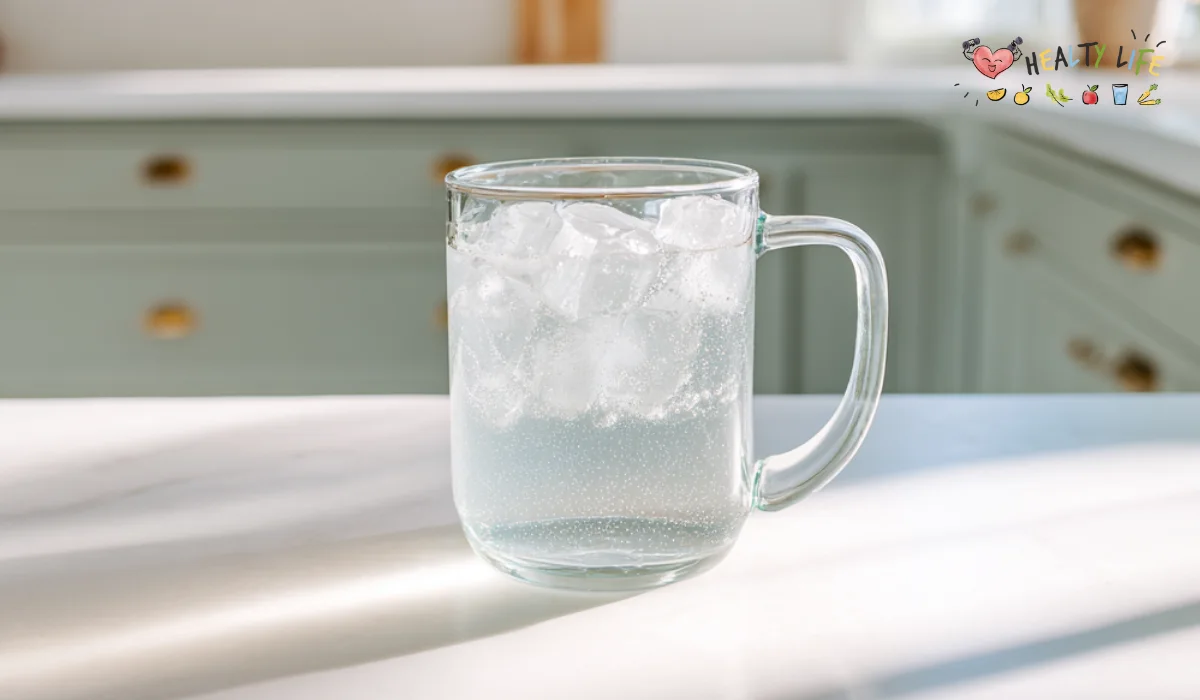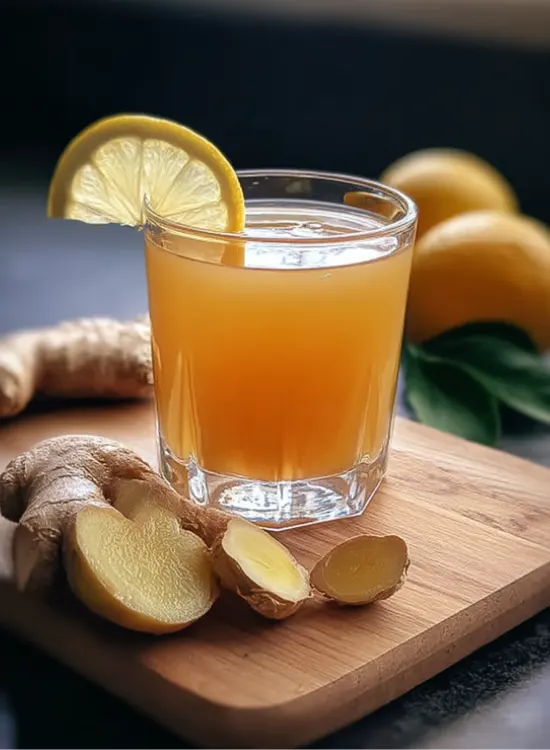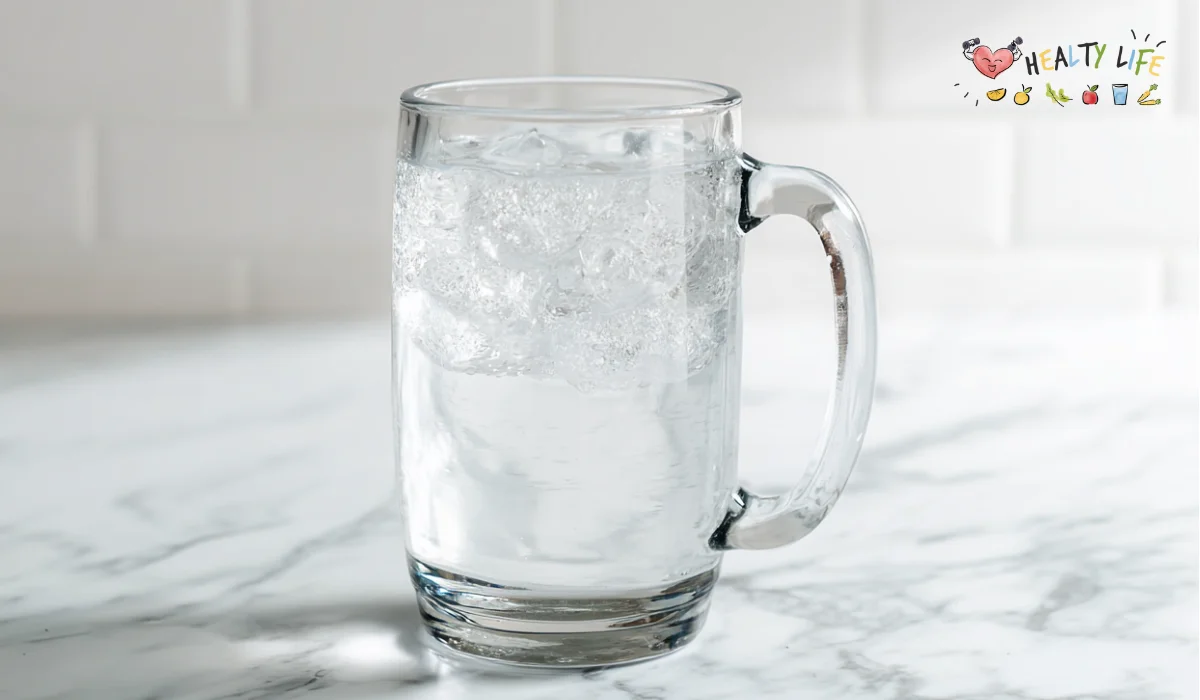Unlock the Power of Anti-Inflammatory Juices
Chronic inflammation is a silent epidemic, increasingly linked to a host of modern health challenges. From persistent joint pain and digestive issues to frustrating skin problems and low energy, the symptoms of inflammation can profoundly impact daily life. In the quest for natural, effective solutions, many are turning to the therapeutic power of food, embracing a holistic, functional medicine approach to health and wellness. This guide is your key to unlocking that power.
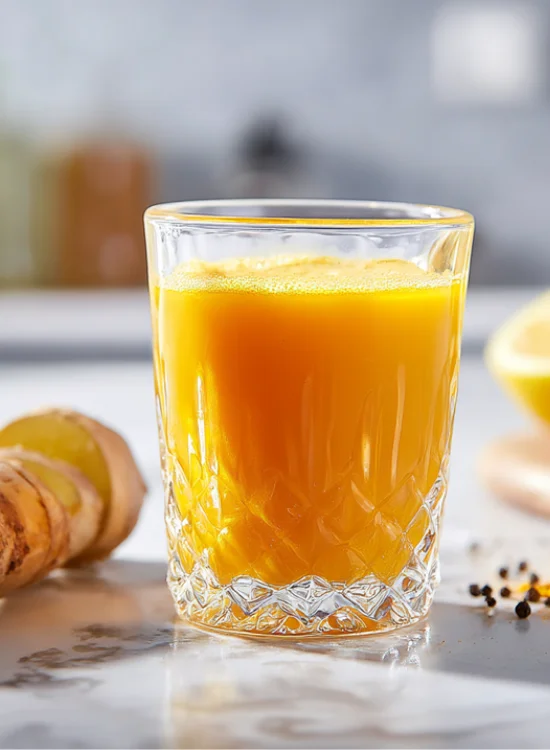
Table of contents
- Unlock the Power of Anti-Inflammatory Juices
- Understanding Inflammation & How Juicing Can Help
- Essential Ingredients: Your Anti-Inflammatory Powerhouses
- Top Anti-Inflammatory Juice Recipes
- Best Practices for Your Anti-Inflammatory Juicing Regimen
- Important Considerations & When to Consult a Professional
- Frequently Asked Questions (FAQ)
- Conclusion: Embrace a Healthier, Less Inflamed You
We’ll dive deep into the science behind inflammation, explain how juicing provides a potent solution, and introduce you to the essential anti-inflammatory ingredients found in nature’s pharmacy. From there, we’ll provide a comprehensive collection of top-tier juice recipes, along with practical tips on preparation, storage, and consumption to help you harness the full healing potential of every glass.
Understanding Inflammation & How Juicing Can Help
What is Inflammation?
Inflammation is a natural and necessary bodily process. It’s the immune system’s response to injury, infection, or irritation, sending a cascade of protective cells to an affected area to initiate healing. However, when this response becomes prolonged and chronic, it can lead to significant health problems. Chronic inflammation is now considered one of the most common underlying issues in modern disease, contributing to a wide range of conditions, including arthritis, asthma, diabetes, cancer, chronic fatigue, depression, and mood disorders. Over time, it can lead to cellular and arterial damage, paving the way for metabolic syndrome and other serious ailments.
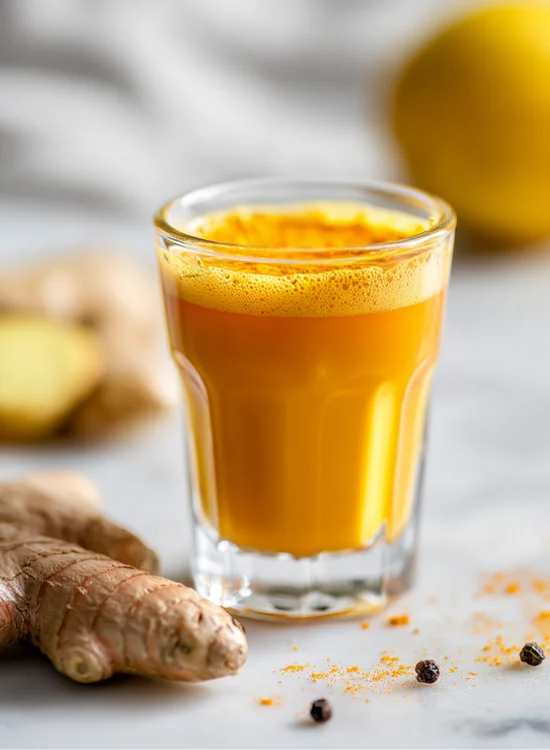
The Anti-Inflammatory Power of Juices
Juicing is a highly effective way to deliver a concentrated dose of anti-inflammatory compounds directly to your cells. Unlike eating whole fruits and vegetables, juicing removes most of the insoluble fiber, allowing your body to absorb a massive influx of vitamins, minerals, antioxidants, and phytonutrients in minutes.
These powerful plant compounds—including flavonoids, triterpenes, and carotenoids—are crucial for combating oxidative stress, a primary driver of inflammation. By flooding your system with these nutrients, juicing helps neutralize free radicals, support your immune system, and promote a healthier gut microbiome. Juicing also gives your digestive system a much-needed “rest” while still providing the essential fuel it needs to function optimally, aiding in detoxification and overall health.
Juicing vs. Blending: Which is Best for Inflammation?
Deciding between juicing and blending depends on your specific goals. Both are excellent ways to consume more fruits and vegetables, but they differ in how they impact nutrient delivery.
- What is Juicing?Juicing involves extracting the liquid content from fruits and vegetables, leaving the pulp and insoluble fiber behind. This process results in a pure, nutrient-dense liquid. There are two main types of juicers: centrifugal (fast, affordable) and masticating (slow, cold-press, and better for nutrient preservation).
- What is Blending?Blending processes the entire fruit or vegetable, including the pulp and fiber, into a thick smoothie. This retains the fiber, which is crucial for digestive regularity, blood sugar control, and feeling full.
- Impact on Nutrient DeliveryWhile blending offers the benefit of fiber for gut health, juicing provides a quicker and more direct absorption of nutrients into the bloodstream. For individuals with chronic inflammation, this rapid delivery of anti-inflammatory compounds can be a game-changer, as the body doesn’t need to work to break down the fiber. While you miss out on fiber, you gain an immediate, potent anti-inflammatory dose. For a well-rounded diet, both juicing and blending have their place. For a great example of a beneficial blend, check out our Green Goddess Smoothie.
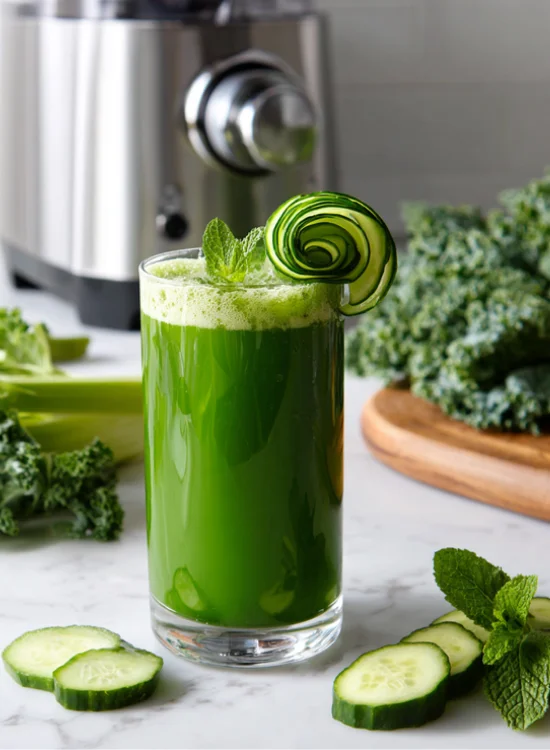
Essential Ingredients: Your Anti-Inflammatory Powerhouses
The true magic of anti-inflammatory juices lies in the specific ingredients you choose. Each fruit, vegetable, herb, and spice brings its own unique set of beneficial compounds to the table.
- Pineapple: A tropical superstar, pineapple is rich in bromelain, an enzyme that has been shown to significantly alleviate joint pain and swelling. It’s also an excellent source of Vitamin C and other antioxidants.
- Ginger: Known for its pungent flavor, ginger contains potent compounds like 6-Shogaol, zingerone, and 8-Shogaol. These antioxidants combat inflammation, reduce muscle pain, and provide significant digestive relief. To learn more about ginger’s benefits, see our guide on Lemon Ginger Water.
- Turmeric: The golden spice of wellness, turmeric owes its power to curcumin, a polyphenol with exceptional antioxidant and anti-inflammatory effects. It helps manage a variety of conditions, from arthritis to anxiety. Always pair turmeric with black pepper to enhance the absorption of curcumin by up to 2,000%. For another way to enjoy this powerful spice, check out our Turmeric Golden Milk recipe.
- Celery: This humble vegetable is a nutritional powerhouse, containing antioxidants and phytochemicals that actively help prevent inflammation.
- Cucumber: With a high water content, cucumber is not only incredibly hydrating but also contains phytonutrients (flavonoids and triterpenes) that fight oxidative stress and inflammation.
- Leafy Greens (Kale, Collard Greens, Spinach): These greens are packed with vitamins (A, K, C, B6), iron, and calcium. The compound sulforaphane in these greens is a potent anti-inflammatory agent that supports bone, heart, eye, and digestive health.
- Apples (Green & Red): High in quercetin, a powerful antioxidant, and Vitamin C, apples protect against oxidative damage and may reduce the risk of disease.
- Lemon/Lime: Excellent sources of Vitamin C and antioxidants. Research has shown that their extracts can help decrease inflammation related to arthritis.
- Carrots: Rich in beta-carotene, which converts to Vitamin A in the body. Carrots are also high in antioxidants, fiber, and potassium to regulate blood pressure.
- Oranges: Abundant in Vitamin C, antioxidants, and flavonoids that provide anti-inflammatory and cardiovascular benefits.
- Beets (Beetroot): The deep red color of beets comes from betalain pigments, which have antioxidant, anti-inflammatory, and chemo-preventive properties. Beets support digestive, cognitive, and heart health. For a targeted cleanse, try our Beetroot Cleanse Juice.
- Fennel: Contains the antioxidant flavonoid Quercetin, which promotes healthy digestion, regulates blood pressure, and supports cardiovascular health.
- Parsley: A rich source of vitamins and flavonoid antioxidants with powerful anticancer, anti-inflammatory, and antimicrobial properties.
- Watermelon: The combination of Vitamin C and lycopene (a potent antioxidant) can reduce oxidative damage and inflammatory markers in the body.
- Basil: Provides anti-inflammatory effects, helps regulate blood sugar, and may improve allergy symptoms and reduce pain and swelling from arthritis.
- Berries (Blueberries, Strawberries, Raspberries): These vibrant fruits are high in anthocyanins and other flavonoids, offering powerful antioxidant and anti-inflammatory properties that can lower blood pressure and reduce disease risk.
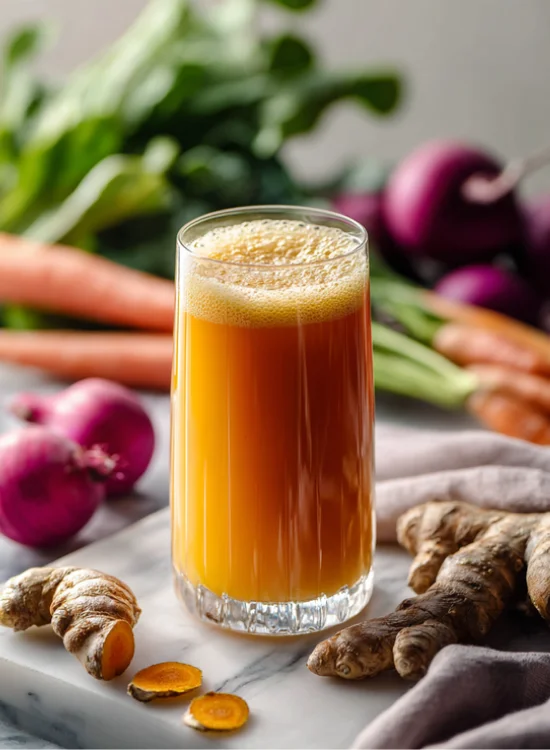
Top Anti-Inflammatory Juice Recipes
Here are some of the most effective and delicious anti-inflammatory juice recipes, designed to nourish your body and soothe inflammation.
Energizing Green Juices
- Green Juice Recipe
- Ingredients: 4 celery stalks, 2 collard green leaves, 1 handful of parsley, 1 green apple.
- Instructions: Wash all ingredients thoroughly. Juice the celery, collard greens, parsley, and apple. Stir and serve immediately.
- Benefits: This juice is a powerful antioxidant, antibacterial, and anti-inflammatory elixir, perfect for a morning boost. For another detoxifying green juice, check out our Green Juice Detox.
- Wheatgrass Juice Recipe
- Ingredients: 2 oz fresh wheatgrass.
- Instructions: Juice wheatgrass using a slow juicer.
- Benefits: A potent detoxifier that aids digestion, boosts the immune system, and reduces oxidative stress.
- Cucumber Juice Recipe
- Ingredients: 1 large cucumber, 1 lime, 1 handful of mint.
- Instructions: Juice the cucumber and lime. Add a few mint leaves to the juice for a refreshing flavor.
- Benefits: Incredibly hydrating, this juice regulates digestion, lowers blood sugar, and promotes healthy skin by combating oxidative stress.
- Kale Juice
- Ingredients: 4 kale leaves, 2 celery stalks, 1 cucumber, 1 lemon.
- Instructions: Juice all ingredients together and serve.
- Benefits: Supports bone, heart, eye, and digestive health. Rich in anti-inflammatory vitamins and minerals like Vitamin K and sulforaphane.
- Apple Spinach Zinger
- Ingredients: 1 large handful of spinach, 1 green apple, 1-inch piece of ginger, 1 lemon.
- Instructions: Juice the spinach, apple, ginger, and lemon.
- Benefits: A delicious and easy-to-drink juice that provides a massive antioxidant boost and aids in digestive support.
- Garden Cooler
- Ingredients: 1 cucumber, 2 celery stalks, 1 handful of parsley, 1/2 lemon, 1/2 green apple.
- Instructions: Juice all ingredients and enjoy.
- Benefits: This refreshing blend supports internal cleansing and deep hydration.
- Zesty Kale
- Ingredients: 3 kale leaves, 1 celery stalk, 1/2 cucumber, 1 apple, 1/2 lemon.
- Instructions: Juice all ingredients.
- Benefits: A nutrient-dense, vitamin-rich juice that aids digestion and provides powerful anti-inflammatory effects.
- Green Blast
- Ingredients: 1 cup spinach, 1 cup kale, 1 cucumber, 1 green apple, 1-inch ginger.
- Instructions: Juice all ingredients and serve over ice if desired.
- Benefits: This comprehensive juice offers powerful anti-inflammatory and detoxifying effects, rich in phytonutrients.
- The Green Queen
- Ingredients: 1 cup kale, 1 cup green grapes, 1-inch ginger, 1/2 lemon.
- Instructions: Juice kale, grapes, ginger, and lemon.
- Benefits: A great choice for natural pain relief and gut health, rich in vitamins and antioxidants.
- Apple + Fennel Detoxer
- Ingredients: 1/2 fennel bulb, 2 apples, 1 cucumber, 1 handful of spinach, 1/2 lemon, a few mint leaves.
- Instructions: Juice all ingredients and stir.
- Benefits: This unique blend supports inflammatory bowel disease, osteoarthritis, improved digestion, and allergy symptoms.
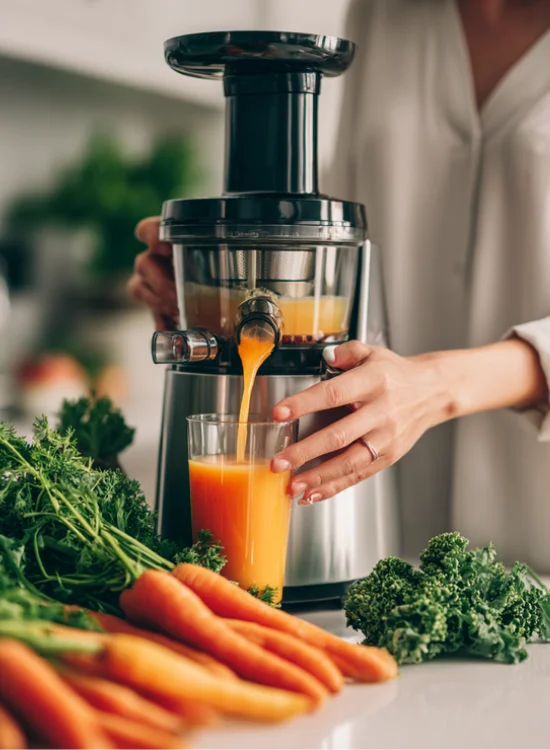
Vibrant & Spicy Juices for Targeted Relief
- Turmeric Shot Recipe
- Ingredients: 2-inch piece of fresh turmeric, 1-inch piece of ginger, 1/2 lemon, a pinch of black pepper.
- Instructions: Juice the turmeric, ginger, and lemon. Add a pinch of black pepper and stir.
- Benefits: A potent, concentrated shot with powerful anti-inflammatory and antioxidant effects to boost your immune system.
- Pineapple and Ginger Juice
- Ingredients: 1 cup of pineapple chunks, 1-inch piece of ginger, 1/2 apple.
- Instructions: Juice the pineapple, ginger, and apple.
- Benefits: A delicious and effective juice for boosting immunity, supporting digestion, and combating joint pain, thanks to bromelain and ginger’s compounds.
- Carrot Juice with Orange and Ginger
- Ingredients: 4 carrots, 1 orange (peeled), 1-inch ginger.
- Instructions: Juice the carrots, orange, and ginger.
- Benefits: Supports vision, cardiovascular health, regulates blood pressure, and aids inflammatory conditions.
- Beet Juice
- Ingredients: 2 medium beets, 2 carrots, 1 apple.
- Instructions: Juice the beets, carrots, and apple.
- Benefits: The betalains in beets support digestive, cognitive, and heart health, while offering significant antioxidant and anti-inflammatory properties.
- Beet Pineapple Fusion
- Ingredients: 1 medium beet, 1 cup pineapple chunks, 1 apple.
- Instructions: Juice all ingredients together.
- Benefits: Combines the powerful anti-inflammatory properties of both beets and pineapple.
- Orange Carrot Revitalizer
- Ingredients: 3 carrots, 1 orange, 1/2 lemon, 1/2 cup parsley.
- Instructions: Juice all ingredients.
- Benefits: A vitamin A and C powerhouse that is immunity-boosting and great for skin health.
- The Orange Crush
- Ingredients: 3 carrots, 2 oranges, 1-inch ginger, 1-inch turmeric, 1/2 lemon.
- Instructions: Juice the carrots, oranges, ginger, turmeric, and lemon.
- Benefits: This juice is an all-in-one remedy that supports gut health, efficient digestion, immune system function, and eye health.
- Tropical Spice
- Ingredients: 1 cucumber, 1 cup pineapple, 1-inch turmeric root, a pinch of cinnamon.
- Instructions: Juice the cucumber, pineapple, and turmeric root. Stir in cinnamon.
- Benefits: The perfect blend to alleviate joint pain and swelling, combat oxidative stress, and help regulate blood sugar.
Berry & Melon Blends for Antioxidant Power
- Berry Bliss
- Ingredients: 1 cup mixed berries (blueberries, raspberries, strawberries), 1 apple.
- Instructions: Juice berries and apple.
- Benefits: Extremely high in anthocyanin antioxidants, this juice supports cardiovascular health and reduces chronic inflammation.
- Blueberry Blast
- Ingredients: 1 cup blueberries, 1 apple, 1 handful of spinach.
- Instructions: Juice all ingredients and serve.
- Benefits: May help lower blood pressure, reduce chronic inflammation, and slow the progression of related conditions like diabetes.
- Beetroot Bliss
- Ingredients: 1 medium beet, 1/2 cup blueberries, 1/2 cucumber, 1 handful of spinach.
- Instructions: Juice all ingredients.
- Benefits: This juice supports blood pressure regulation, helps manage symptoms of osteoarthritis, and may reduce kidney inflammation.
- Watermelon Cleanse
- Ingredients: 2 cups watermelon chunks, 1/2 lime, a few basil leaves.
- Instructions: Juice the watermelon and lime. Stir in the fresh basil.
- Benefits: The lycopene and Vitamin C in this juice reduce oxidative damage, improve inflammatory markers, and may help regulate blood sugar.
Unique Anti-Inflammatory Juices
- Cabbage, Apple, & Cucumber Juice
- Ingredients: 1 cup red cabbage, 1 apple, 1/2 cucumber.
- Instructions: Juice all ingredients.
- Benefits: Cabbage is a powerful gut healer, and this juice is rich in antioxidants and vitamins K and C, which are excellent for boosting digestive health.
- Fennel Juice
- Ingredients: 1/2 fennel bulb, 1 green apple, 1 cucumber.
- Instructions: Juice all ingredients.
- Benefits: Promotes healthy digestion, regulates blood pressure, and supports cardiovascular health due to the flavonoid Quercetin.
Best Practices for Your Anti-Inflammatory Juicing Regimen
To get the most out of your anti-inflammatory juicing journey, follow these best practices.
Choosing the Right Juicer
- Centrifugal Juicers: These are a great, affordable option for beginners. They’re fast and easy to use, but the high-speed blade can generate heat, which may degrade some nutrients.
- Masticating Juicers (Slow Juicers): While a larger investment, these juicers are often considered the gold standard. They “chew” the produce slowly, extracting juice with minimal heat and oxidation, resulting in a higher yield and better nutrient preservation.
- Alternatives: If you don’t have a juicer, you can use a high-powered blender. Blend ingredients with a small amount of water, then strain the mixture through a fine mesh strainer or a nut milk bag to remove the pulp.
Ingredient Selection & Preparation
Always opt for fresh, high-quality, and preferably organic ingredients to minimize pesticide and herbicide exposure. Thoroughly wash all produce before juicing.
- Lemon: For maximum benefits, Dr. Axe recommends juicing the entire lemon, including the peel, as it contains beneficial compounds. However, if you find it too bitter, you can peel it first.
- Pineapple: Always remove the thick outer skin and the tough core.
- Ginger: You generally don’t need to peel ginger, as most juicers can handle the skin.
- Apples: It’s best to leave the skin on apples to retain quercetin and other antioxidants, but be sure to remove the seeds as they contain a small amount of cyanide.
Healthy Juicing Guidelines: The 80/20 Rule
To keep your sugar intake in check, especially if you’re watching your blood sugar, follow the 80/20 Rule: aim for 80% vegetables and 20% fruit. This balances the potent nutrients from vegetables with the natural sweetness from fruits, making your juice both delicious and beneficial without excessive sugar.

Storage and Consumption Tips
For maximum freshness and nutrient retention, it is always best to drink your juice immediately after making it, ideally within 30 minutes. If you need to store it, pour it into an airtight glass container and refrigerate for up to 24 hours. For longer storage, you can freeze excess juice in ice cube trays for up to 5 days. Consider starting your day with a juice on an empty stomach for quick nutrient absorption.
Important Considerations & When to Consult a Professional
While anti-inflammatory juices are a powerful tool for wellness, they should be part of a broader, holistic approach to health.
Juicing as an Addition, Not a Replacement for Whole Foods
Remember that juicing removes most of the fiber from fruits and vegetables. Therefore, it should be seen as a supplement to, not a replacement for, a balanced diet rich in whole, fiber-filled foods. Fiber is essential for a healthy digestive system, blood sugar control, and feeling satiated.
Allergies, Sensitivities, and Dietary Restrictions
Always listen to your body. If you have any pre-existing health issues, allergies, or sensitivities (e.g., to citrus fruits or nightshade vegetables), it is crucial to consult a healthcare professional before making significant dietary changes. Diabetics should be particularly mindful of fruit sugar content, and individuals with kidney issues should monitor their intake of high-potassium or oxalate-rich ingredients like spinach. Ingredient substitutions are always an option—for example, if you are allergic to pineapple, you can substitute it with mango or orange.
Integrating Juicing with a Holistic Lifestyle
Diet is just one piece of the puzzle. For lasting relief from inflammation, it is vital to combine your juicing regimen with other crucial lifestyle factors, including regular exercise, adequate sleep, and effective stress management. To uncover the root cause of chronic inflammation and receive a personalized treatment plan, consider consulting a functional medicine practitioner.
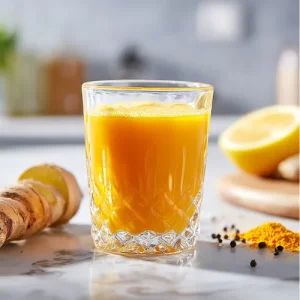
8 Powerful Anti-Inflammatory Juice Recipes
Equipment
- Juicer (centrifugal or masticating preferred)
- Alternative: High-powered blender + fine mesh strainer
- Sharp knife and cutting board
- Vegetable peeler
- Measuring cups
- Glass storage containers
Ingredients
Recipe 1: Energizing Green Anti-Inflammatory Juice
- 4 celery stalks washed
- 2 collard green leaves washed
- 1 handful fresh parsley washed
- 1 green apple washed and cored
Recipe 2: Golden Anti-Inflammatory Turmeric Shot
- 2- inch piece fresh turmeric root washed
- 1- inch piece fresh ginger root washed
- 1/2 fresh lemon peeled
- 1 pinch black pepper
Recipe 3: Tropical Pineapple Ginger Juice
- 1 cup fresh pineapple chunks peeled and cored
- 1- inch piece fresh ginger root washed
- 1/2 green apple washed and cored
Recipe 4: Antioxidant-Rich Beetroot Juice
- 2 medium fresh beets scrubbed clean
- 2 large carrots washed and peeled
- 1 green apple washed and cored
Recipe 5: Antioxidant Berry Juice
- 1/2 cup fresh blueberries washed
- 1/2 cup fresh raspberries washed
- 1/2 cup fresh strawberries hulled and washed
- 1 green apple washed and cored
Recipe 6: Hydrating Cucumber Mint Juice
- 1 large cucumber washed
- 1 lime peeled
- 1 handful fresh mint leaves washed
Recipe 7: Vitamin A Carrot Orange Ginger Juice
- 4 large carrots peeled and washed
- 1 large orange peeled
- 1- inch piece fresh ginger root washed
Recipe 8: Lycopene-Rich Watermelon Basil Juice
- 2 cups fresh watermelon chunks seeded
- 1/2 lime peeled
- 6-8 fresh basil leaves washed
Instructions
Preparation Steps:
- Wash and Prep: Thoroughly wash all produce under cold running water
- Peel and Core: Remove peels where indicated, core apples, remove seeds
- Size for Juicer: Cut larger ingredients into pieces that fit your juicer
- Juice in Order: Process ingredients according to individual recipe specifications
- Stir and Serve: Mix well and serve immediately for maximum nutrient retention
Specific Instructions by Recipe:
- Recipe 1 – Green Juice: Juice celery → collard greens → parsley → apple
- Recipe 2 – Turmeric Shot: Juice turmeric → ginger → lemon, add black pepper, stir
- Recipe 3 – Pineapple Ginger: Juice pineapple → ginger → apple
- Recipe 4 – Beet Juice: Juice beets → carrots → apple, stir well
- Recipe 5 – Berry Juice: Juice berries slowly → apple last, strain if desired
- Recipe 6 – Cucumber Mint: Juice cucumber → lime, stir in mint leaves
- Recipe 7 – Carrot Orange: Juice carrots → orange → ginger
- Recipe 8 – Watermelon: Juice watermelon → lime, stir in basil leaves
- Serving Size: 1 cup (8 oz) per serving for recipes 1,3,4,5,6,7,8 | 1 oz shot for recipe 2
Notes
Storage Guidelines:
- Best: Consume immediately within 30 minutes of juicing
- Good: Refrigerate in airtight glass container up to 24 hours
- Extended: Freeze in ice cube trays up to 5 days
Health Tips:
- Follow 80/20 rule: 80% vegetables, 20% fruit for blood sugar control
- Start with smaller portions if new to juicing
- Drink on empty stomach for best absorption
- Choose organic produce when possible
Ingredient Substitutions:
- Pineapple allergy: Use mango or orange
- Apple alternative: Use pear or additional berries
- Citrus sensitivity: Reduce lemon/lime amounts
- Ginger too strong: Start with smaller pieces
Special Considerations:
- Diabetics: Focus on vegetable-heavy recipes (1, 6, 7)
- Kidney issues: Limit high-oxalate ingredients like spinach
- Blood thinners: Consult doctor before consuming large amounts of leafy greens
Frequently Asked Questions (FAQ)
Yes, the fruits and vegetables used in juicing contain powerful antioxidants and anti-inflammatory compounds that can positively affect inflammation.
Common side effects include pain, chronic fatigue, depression, mood disorders, arthritis, asthma, diabetes, and cancer.
Blending retains the pulp and fiber in the drink (making a smoothie), while juicing separates the liquid from the pulp and fiber. For another great smoothie recipe, check out our guide to the Detox Island Green Smoothie.
Many people drink it daily, while others opt for 2-3 times a week. It can be safely consumed daily unless stomach distress occurs.
Fresh juice is best consumed immediately or within 30 minutes. It can be stored in an airtight glass container in the refrigerator for up to 24 hours. Juice shots can be refrigerated for up to 5 days or frozen in ice cube trays for longer storage.
Yes, you can. Blend the ingredients with a small amount of water, then strain the mixture through a fine mesh strainer or a nut milk bag to remove the pulp.
You can use the whole lemon (peel included) for its benefits, but some may peel it for less bitterness. Pineapple should have its outer skin and core removed. Ginger typically does not need to be peeled. Apple peels are beneficial for nutrients, but their seeds should be removed.
Some fruit-heavy recipes may be higher in sugar and carbs. It’s recommended to prioritize vegetable juices (80% vegetables, 20% fruit) or consult a healthcare provider for personalized advice.
Yes, they can, but start with small portions and consider serving with chewable food, as high fiber content might lead to digestive changes.
Look for alternative ingredients that offer similar benefits. For pineapple, mango or orange could be substitutes. For apple, pear or berries might work. Always check for cross-allergies.
Conclusion: Embrace a Healthier, Less Inflamed You
Incorporating anti-inflammatory juices into your routine is a simple yet powerful step toward a healthier, more vibrant you. By focusing on a balanced diet rich in nutrient-dense fruits and vegetables, you can actively combat inflammation, boost your immunity, and support your body’s natural healing processes.
Experiment with these recipes to find the ones that best suit your taste and health goals. Remember to listen to your body, balance your fruit and vegetable intake, and view juicing as part of a larger, holistic lifestyle that includes exercise, sleep, and stress management. For any specific health conditions or a personalized meal plan, always consult a healthcare professional or a registered nutritionist. Your journey to a less inflamed, more energized life starts here.


